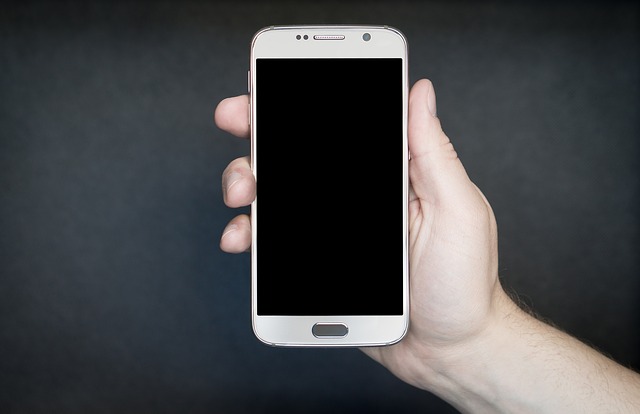The U.S. healthcare system is in the transition from a doctor-centric model to a “smart patient”
Disease prevention and wellness self-care system that increasingly is empowering smart patients to monitor and help manage their health status.

Many individuals pursue a daily health and fitness regimen with the help of the Internet of Medical Things (IoMT) – one of the important facets of the better-known Internet of Things (IoT).
Smart patients, armed with advanced body sensors, will revolutionize the medical industry in patient care and reduce rising healthcare costs by plugging into today’s widening array of digital wireless smartphones and sensors.
Similar to “smart cars” equipped with digital diagnostic and other sensors such as GPS, autopilot, temperature control, speed, motion, and efficiency, we know more about maintaining our car’s health than about maintaining our personal health.
But that is about to change because “The Future of Medicine is in Your Hands,” according to Dr. Eric Topol, cardiologist and author of “The Patient Will See You Now”. The proliferation of digital wireless sensor technologies enables us to learn how to manage and sustain healthy lifestyles, while the Internet enables online visits with doctors and access to timely medical information (when it is from reliable and competent sources).
The “Internet of Medical Things” will democratize healthcare.
Dr. Topol states, “You may do your own electrocardiogram by placing a finger on a smartphone, or your glucose can be continuously monitored with a noninvasive sensor on skin. Most parts of the body can be examined from home. You can diagnose diseases with a “Band-Aid” on your finger. You don’t have to go to a sleep lab to have your sleep patterns analyzed. Almost all lab work can be performed via your smartphones, without going to a health-funded clinic or the hospital. All the devices have already been approved by the FDA.”
Patients will be able to check, on a daily basis, blood pressure, oxygen level, heart rhythm, etc. on their smartphones with wearable body sensors. Computers will interpret data patients can discuss with their doctors for health guidance. Patients will exchange information with each other by video-chat and on data-exchange platforms.
Doctors will be more like advisers with the ability to oversee medical care.
According to Sanjay Gupta, M.D., Chief Medical Correspondent for CNN, “Dr. Eric Topol is uniquely positioned to map out a new era of democratized medicine — a time when each individual will not only have immediate access to their own medical data but even generate much of it and play a principal role in their healthcare.”
These changes will not only empower patients to manage their own health conditions but also reverse accelerating healthcare costs of more than $2.7 trillion, especially during the current baby boomer bubble that is putting a strain on the Social Security Trust Fund and Medicare program.
Healthcare accounts for more than 18% of GDP and will increase dramatically as over 9,000 baby boomers daily reach age 65 for the next two decades. Over 73 million seniors will make up some 20% of the U.S. population by 2030. Additionally, seniors are living 20 years longer than when the original retirement calculations were made with the enactment of the Social Security program in 1935.
And we can’t forget that about 30 to 40% of the Medicare cost is for “end of life” patient care in high-tech hospitals to prolong failing lives with drugs and expensive medical equipment.
To avoid expense and hassle on both sides, the future of “virtual” hospitals without beds is currently being implemented by Mercy Hospital in the Virtual Care Center, located outside of St. Louis.
Their digital telemedicine program places video calls to patients using highly sensitive virtual reality (VR) two-way cameras and monitors their virtual signs in real-time through sensors (IoMT) that plug into an iPad. Their goal is to provide care when and where needed and prevent some of the hospital re-admissions that add $41.3 billion to hospital costs, annually, according to a government study.
Americans face the “perfect healthcare storm” with the rising national obesity rate of over 30% among our children and more than 50% among our adults, leading to increases in heart disease, diabetes, cancer, and other ills, and over one out of three women are projected to contract breast cancer and one out of every two men over 65 will have prostate cancer in their lifetimes.
The U.S. healthcare system is the most expensive medical system in the world, with the best and most modern medical technologies, but ranks 31th by the World Health Organization (WHO) in the ranking of world healthcare systems.
The Medical-Industrial Complex has developed into a disease-symptoms management and maintenance system requiring a top-down, vertically integrated network of Big Pharma, Big Medicine, doctors, and patients. Topping the pyramid are Big Pharma — a $1.7 trillion global enterprise — and Big Medicine – a behemoth super-structure of expensive medical devices, exotic technologies, and costly hospital facilities that need patients to cover expenses and overhead.
Naturopathic and integrative medicine healthcare professionals have long charged that current medical practice is about “a pill and bill for every ill” and “cut, burn and poison” (surgery, radiation, and chemotherapy) for patient care protocols, in order to cover the cost of doing business and provide a decent return on investment for their shareholders.
In a highly specialized medical profession with cardiologists, urologists, oncologists, and many more – iologists, we need to understand the whole-body ecosystem and how it functions from the genomic cellular levels to each of the organs, from the many complex processes such as circulation and digestion to emotion and cognition. “DNA technology has transformed our world,” says biotech entrepreneur Sebastian Kraves, “now anyone can experiment with DNA at home using a device smaller than a shoebox where the secrets in your DNA are yours to find.”
Once a patient receives the data from an array of body sensors and organizes it along with the information on his or her health profile with genomic sequencing, how does one make healthy choices? There are many responses to this question!
We know that plant-based nutrition, exercise, and drinking alkaline water are essential for maintaining a healthy body, in addition to avoiding processed foods and sugar.
Another response is to become a very smart patient with very smart technology, constantly growing smarter thanks to the emerging Internet of Medical Things.



